So excited to be going on our first Tiger safari! We all were. We knew that chances were slim since many people after going on numerous Safaris fail to see tigers. Of course, there are more things to do than just a safari. This Indian National animal has proven to be quite elusive to see, and tourists spend hours on safaris just hoping for a glimpse of this symbol of strength and power. But we were still hopeful; hope being the operative word.
Morning Safari Ranthambore National Park Zone 6
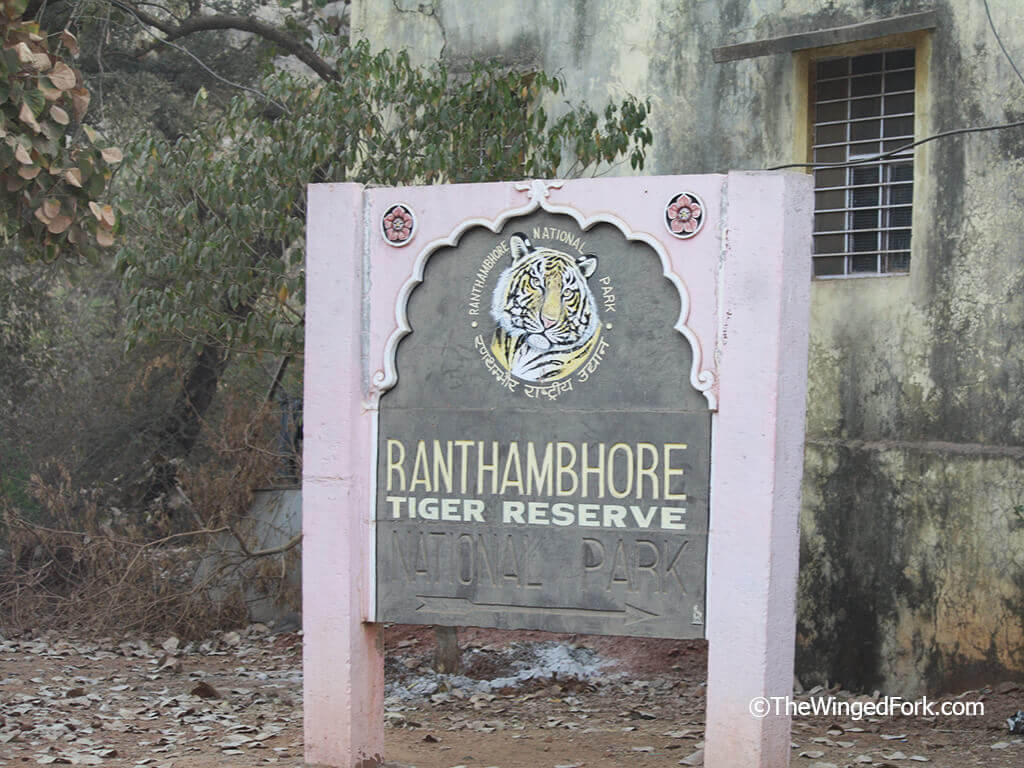
We got into our GYPSY, ( an upgrade from the canter courtesy Shashank Saraswat of Ranthambhore Routes) and were driven from Vanya Mahal to Ranthambhore National Park – Zone 6 by our driver Mr. Ravinder and our guide Rajesh.
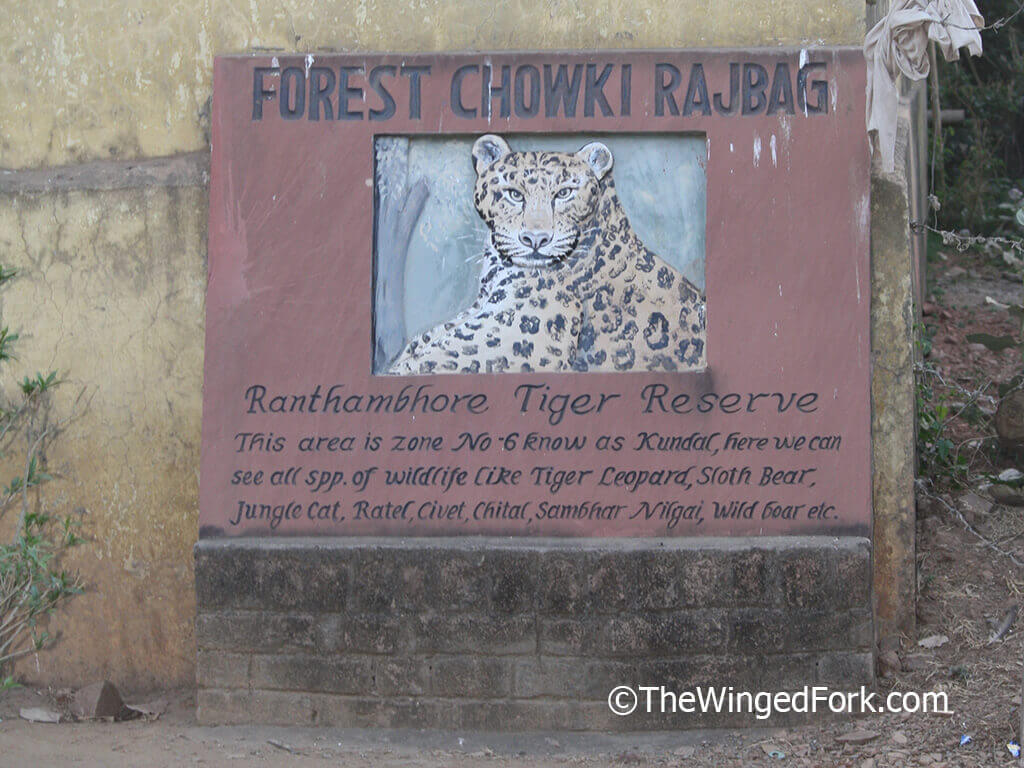
The morning air was crisp & cool and we huddled under our blankets on the way to the park. Mornings are the best time to visit Ranthambore National Park since the animals are out and about in the cooler air. After the entrance formalities at the gate, we headed into the park and began our Ranthambhore National Park safari from the entrance of Zone 6, also known as Kundal.
About a few mins in, is an old gate of the Fort wall which our guide said is often used by the Tigers to rest and relax. (A mother and her 2 cubs to be exact). They took us to the top of the hill to get a good view of the gate from top and see if the tigers were there. But not our luck.
We then headed back down and turned onto the other path, when about 2 or 3 other vehicles came toward us from the opposite direction saying the Tigers were coming.
Our driver Ravnider then backed up part way up the hill and positioned himself where he thought would be a good angle to see the tigers. We waited with bated breath…
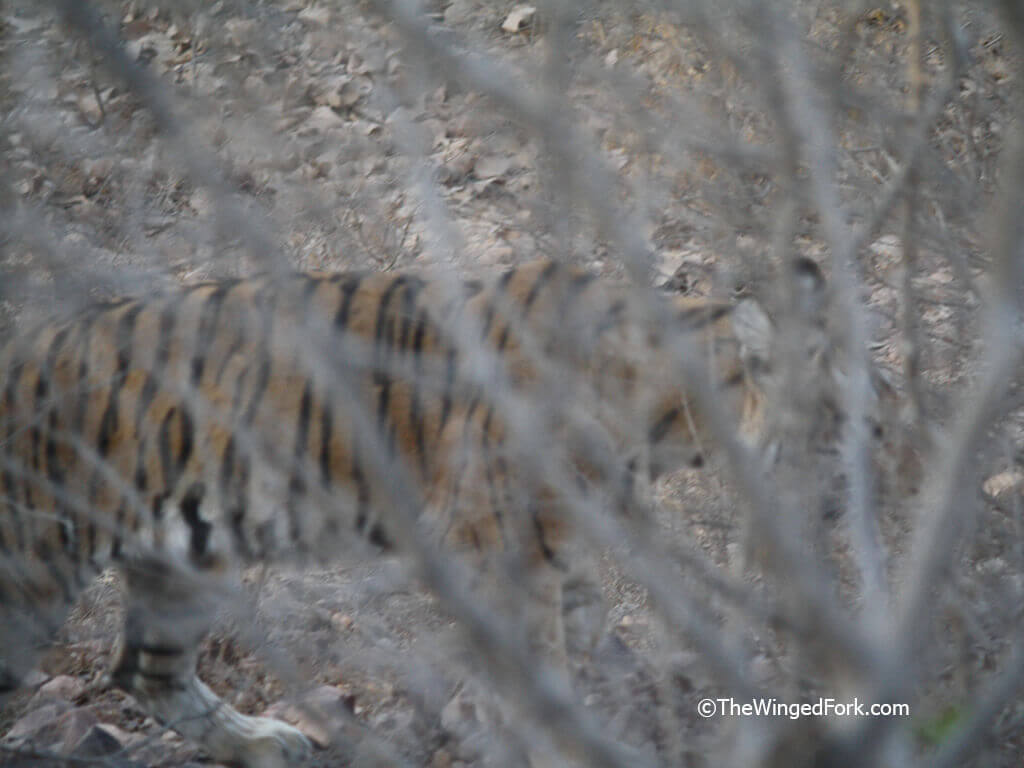
And then quietly through the bushes came the mother Noor and her cub.
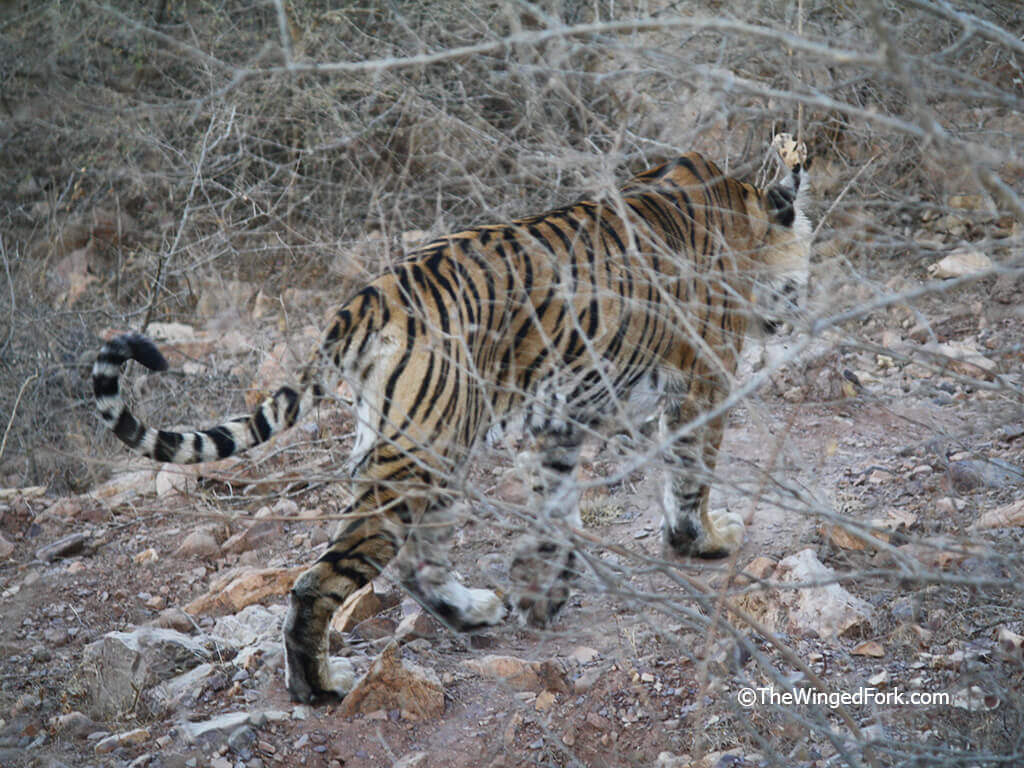
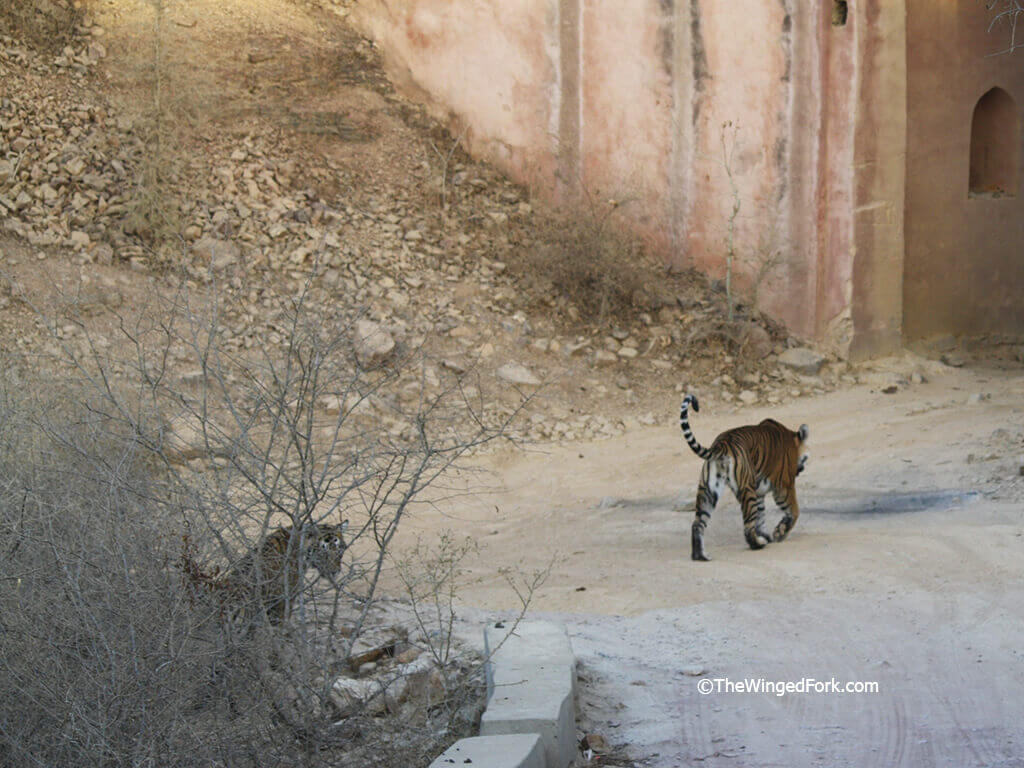
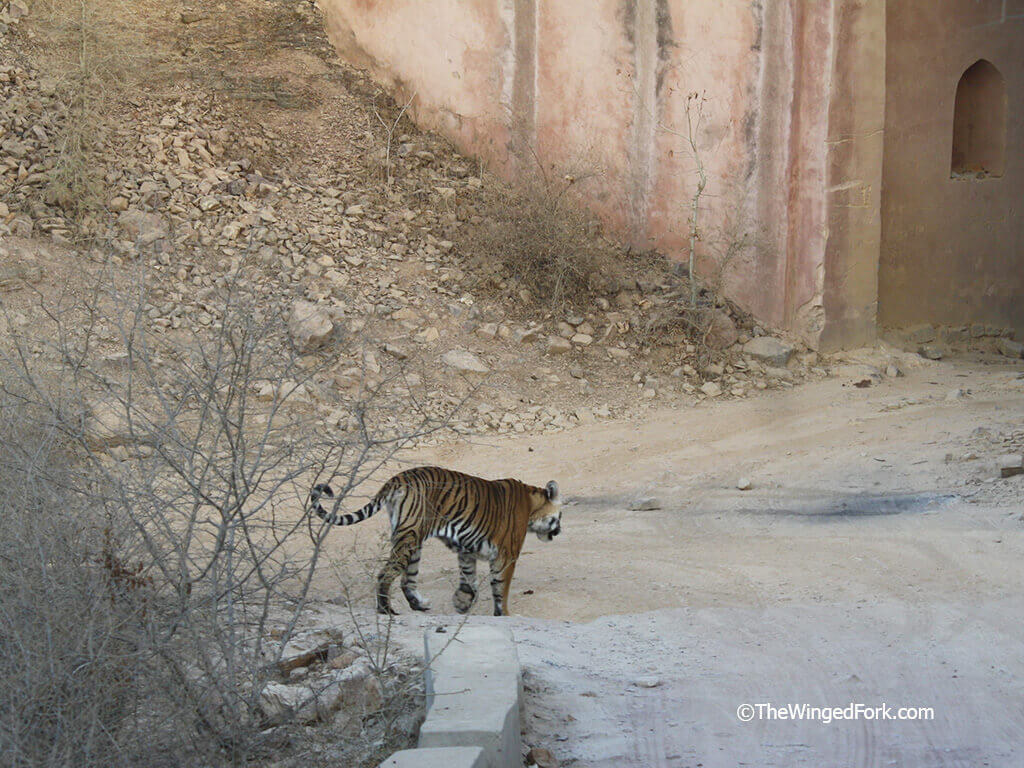
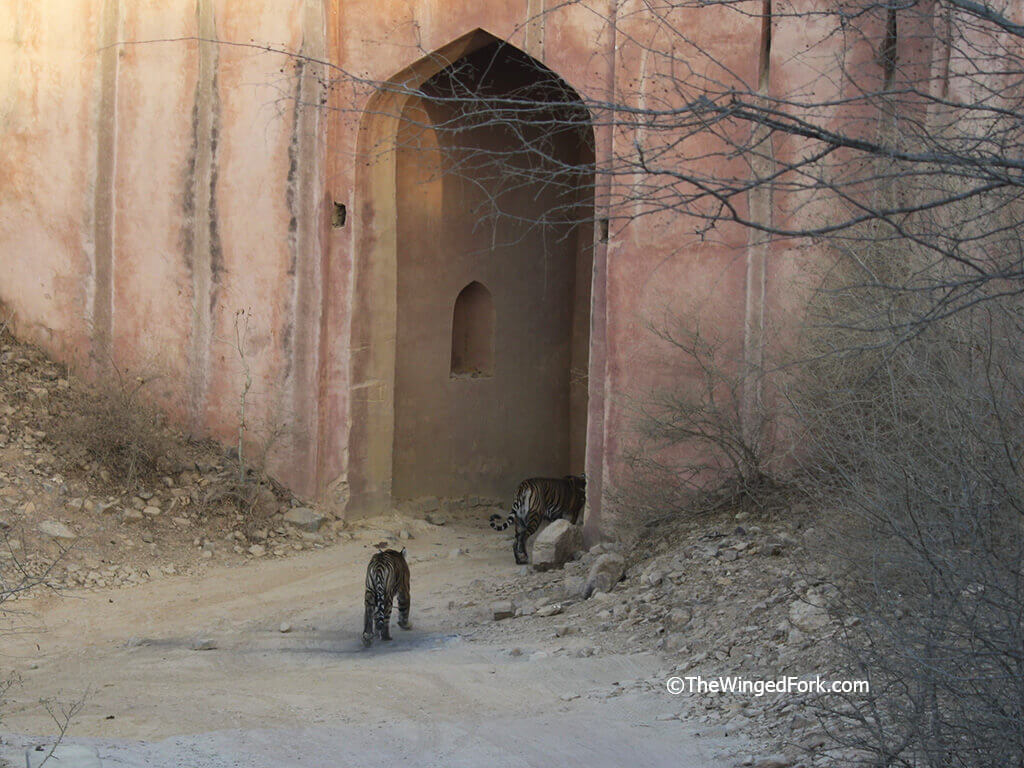
They simply walked across the path and through the gate and disappeared into the bushes again, oblivious of all of us. They said she has 2 cubs, but there was just one with her at the time.
We then drove back up to the top of the hill to see if they had perched themselves on the top of the gate wall; but they weren’t there. We waited a while hoping they would show up but they didn’t.
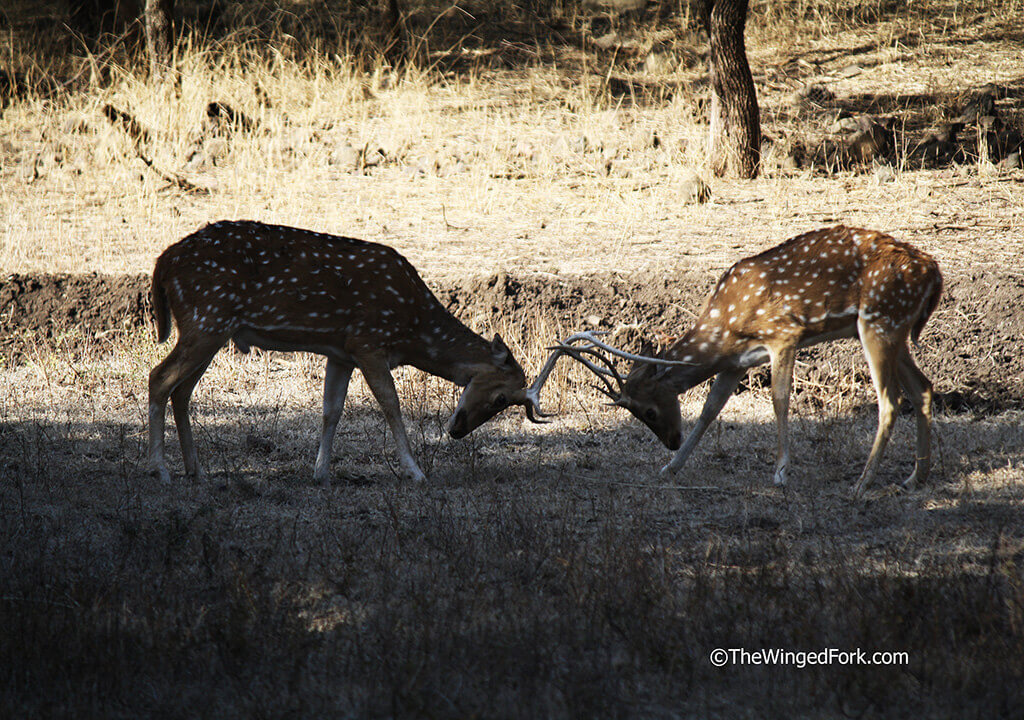
We saw The Hunger Games. Oh wait, that’s Jennifer Lawrence and Josh Hutcherson. Nope, we didn’t see them. We saw a pair of Chital deer fighting each other. Rajesh explains that these fights are also part of the process to shed their antlers, apart from rubbing them on trees.
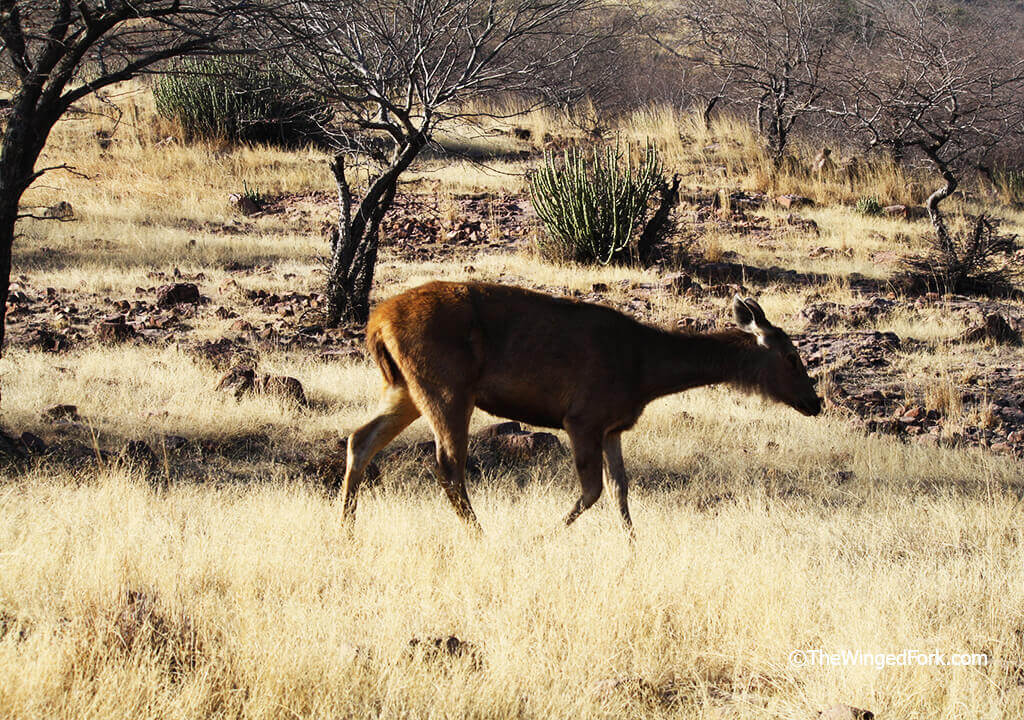
We also saw a Sambar deer and some more chital.
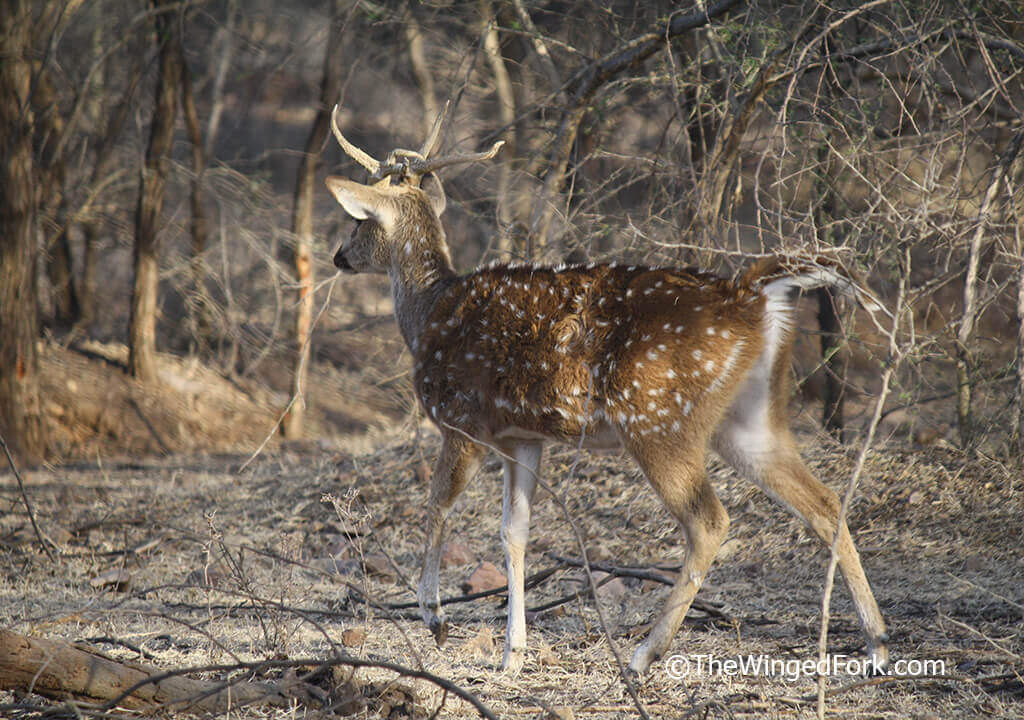
And then we had to take a pause for the chinkara crossing our path.
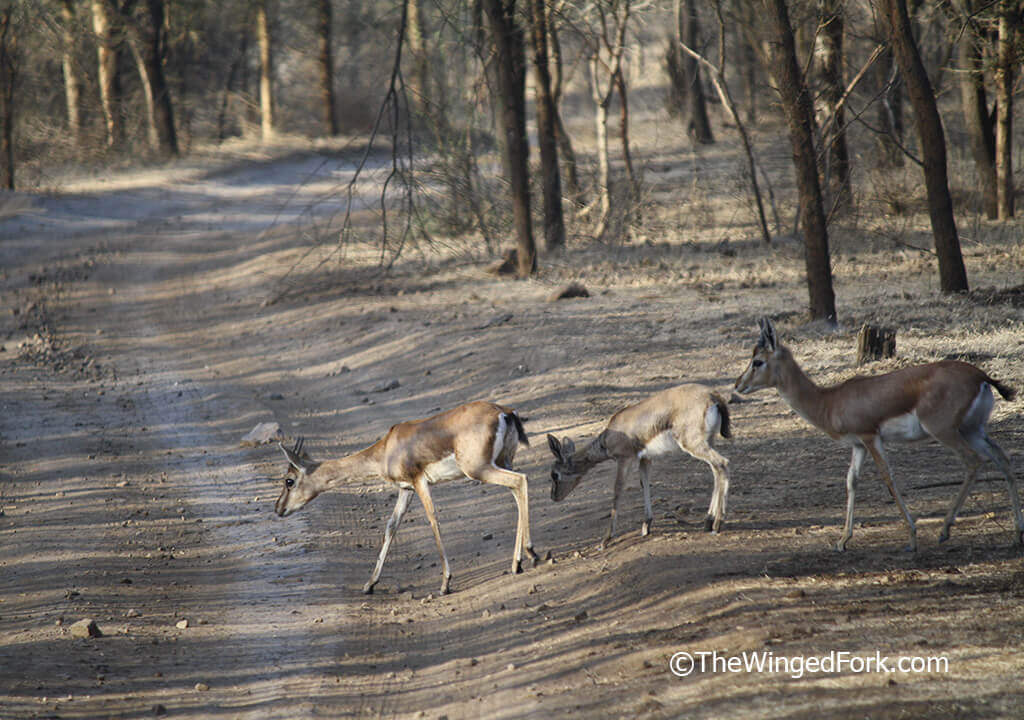
We also came across some Nilgai or blue buck or blue bull. The adult males have a coat that shines blue gray when they’re fully grown. The females and young ones though are orange to a tawny brown in colour.
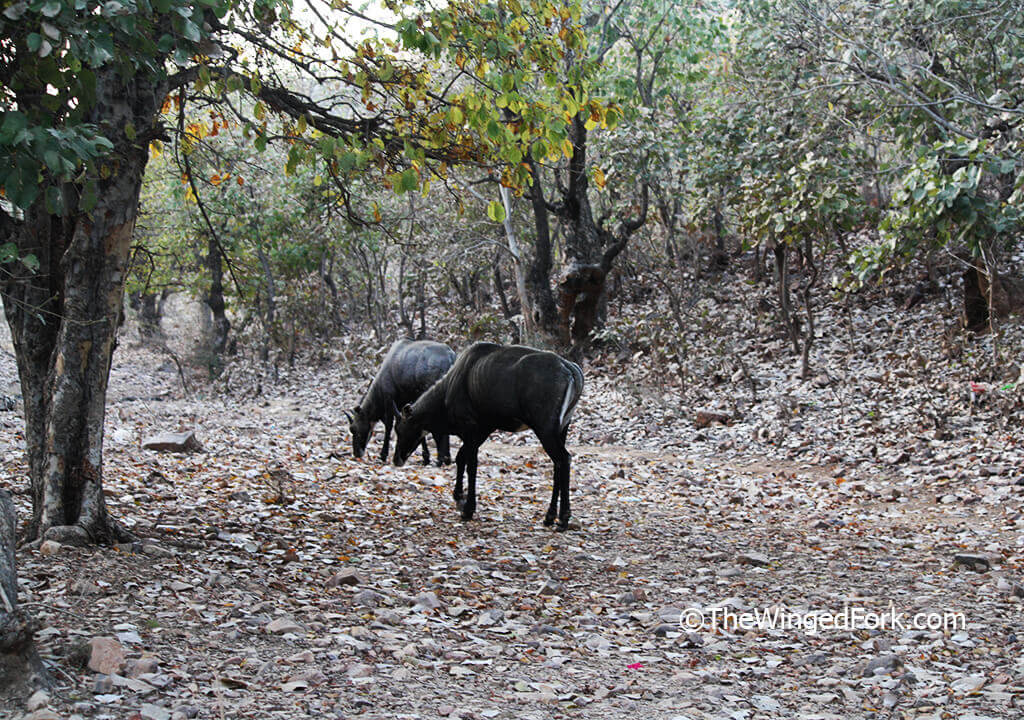
There were peacocks near one watering hole that flew all the way to the top of the trees. But those shots didn’t come out too good. So here’s a pic of the National bird just walking around. Why was the peacock chosen as the Indian National bird? Because apart from being a symbol of beauty and a part of Indian culture, it’s also present all over the country and easily recognizable.
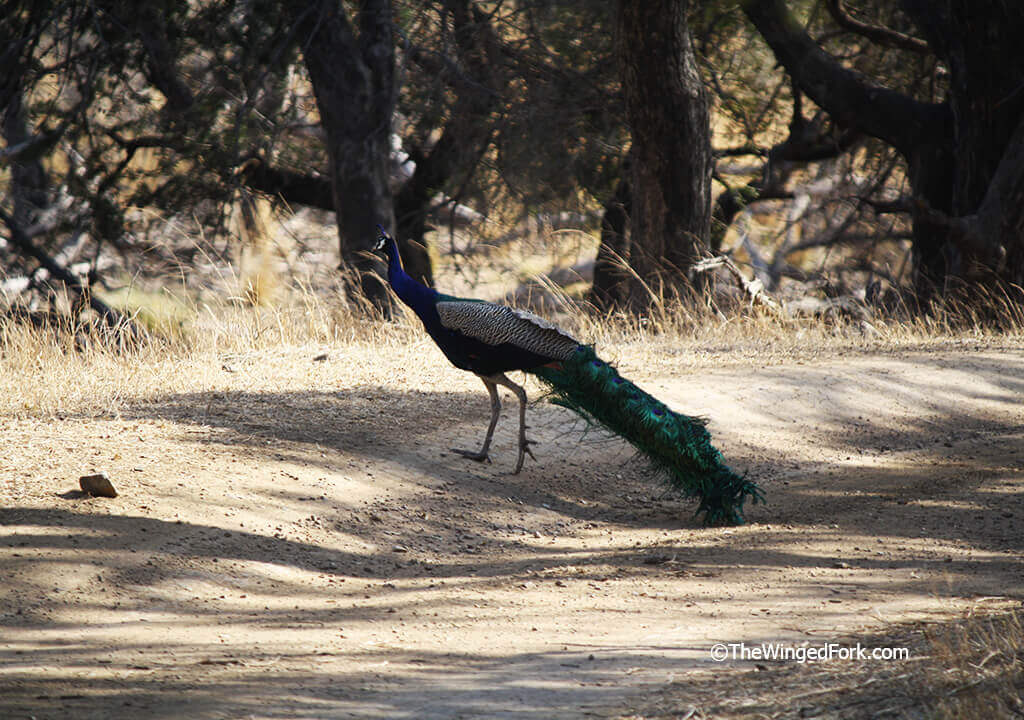
We stopped for a break midway. There were a few other jeeps and canters there. The tree pies seemed to know the spot very well.
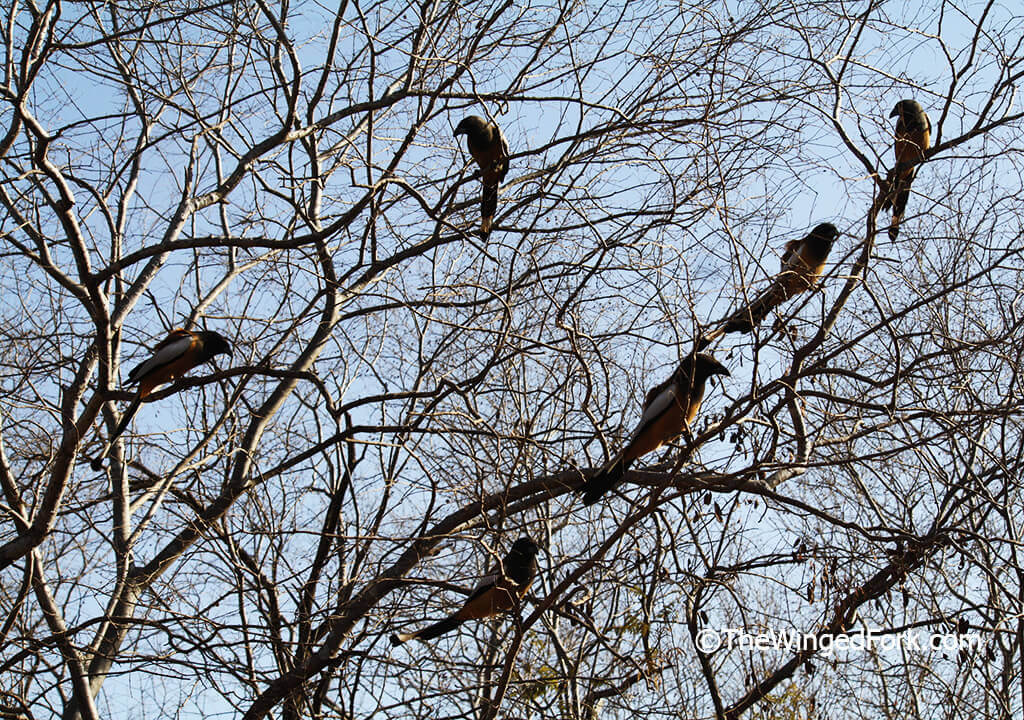
They weren’t afraid of us and came as close to us as possible.
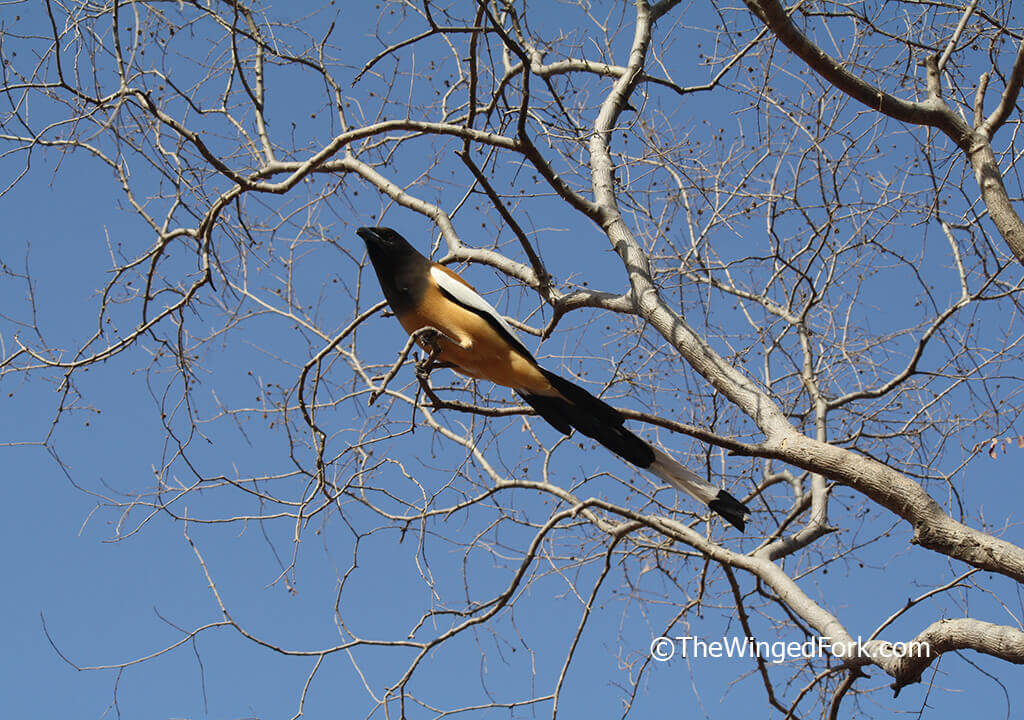
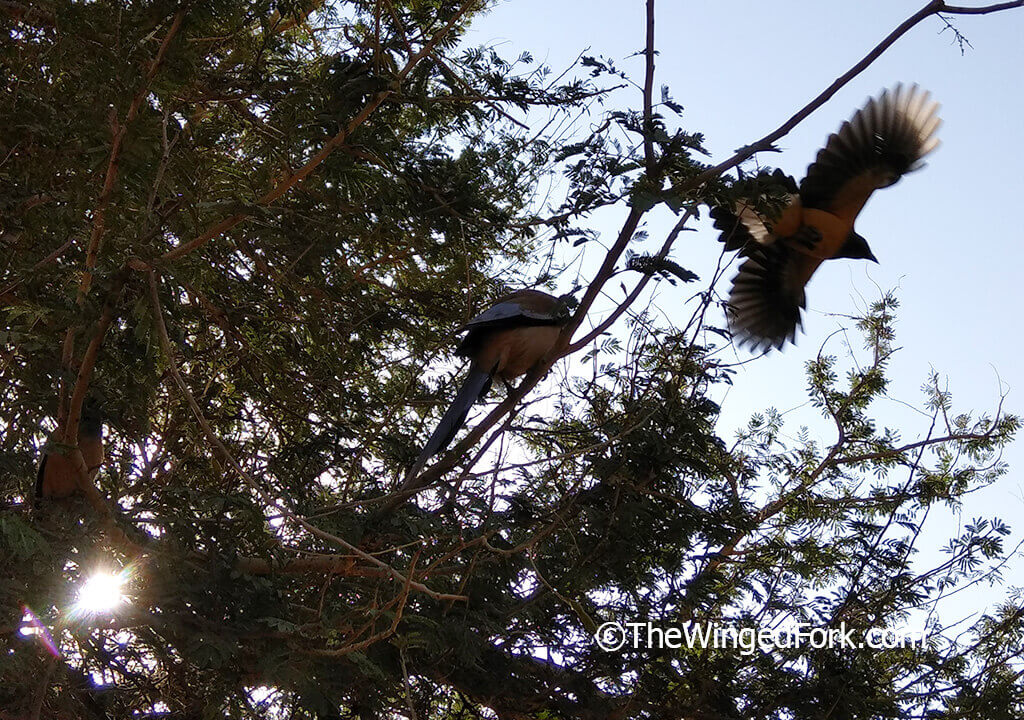
Some of them even tried to take oranges from a lady in another canter, but only grabbed a few pieces. Good divers I must say!
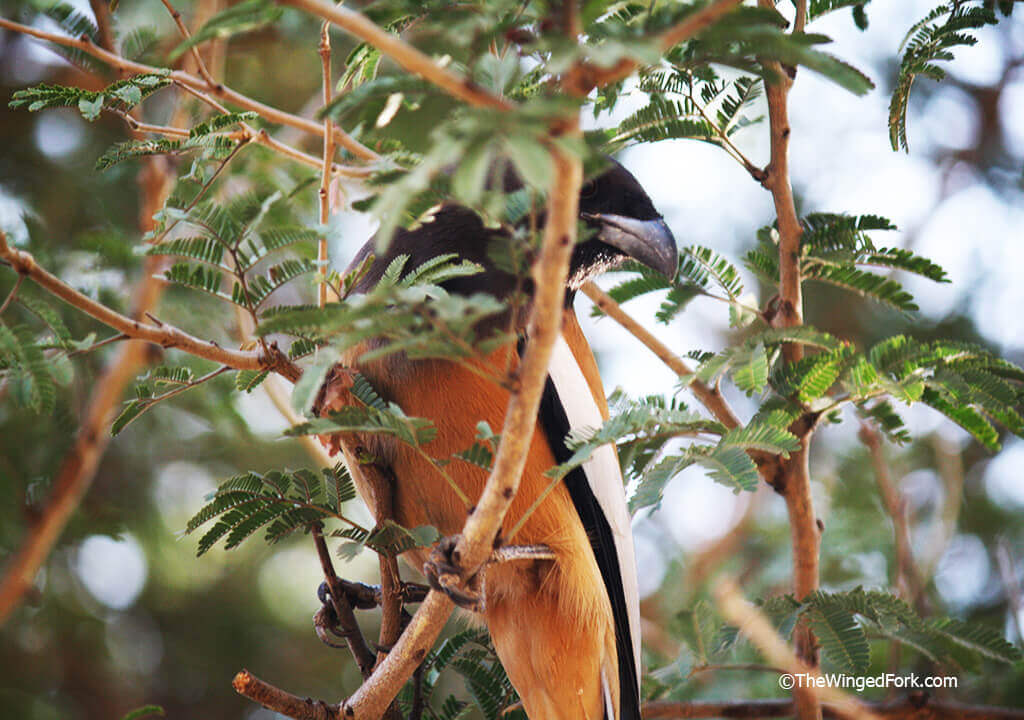
We saw some langur too. There was one langur sitting by the side of the road resting his hands on his knees like a tired guy.
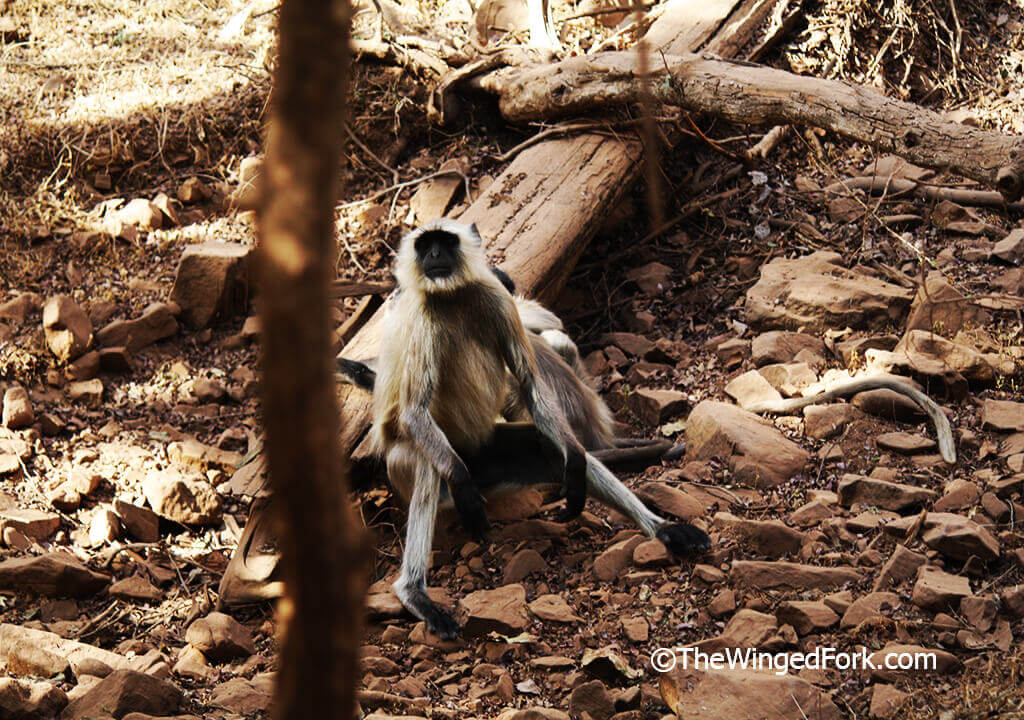
The partridge was missing his pear tree.
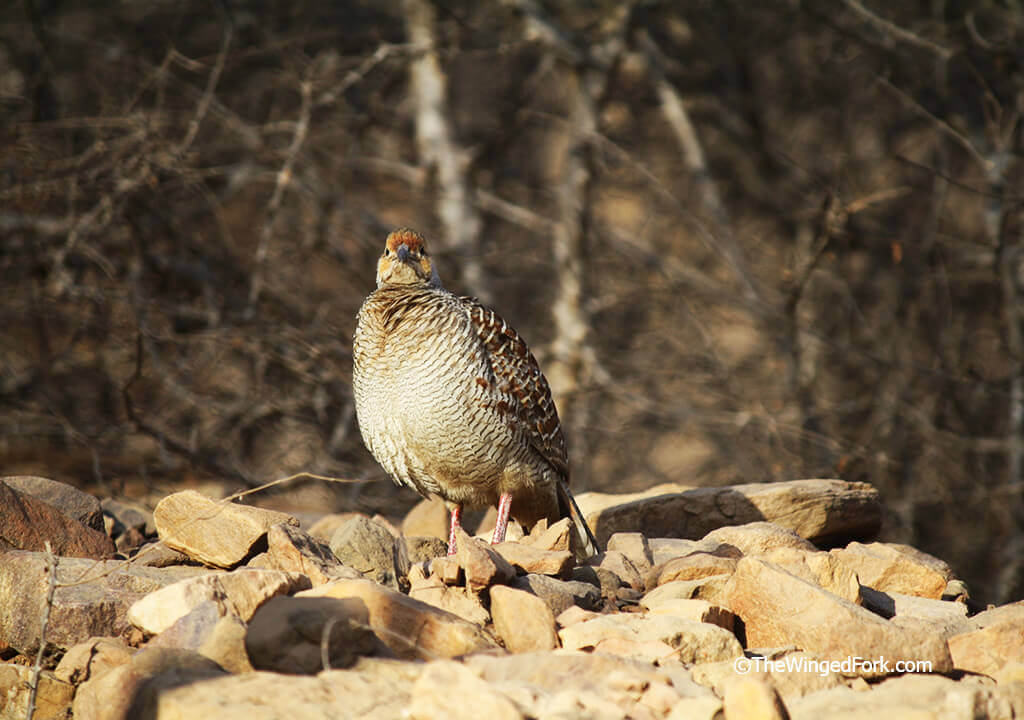
And the beautiful black Indian robin or Sarafaz Borah was saying a prayer to heaven.
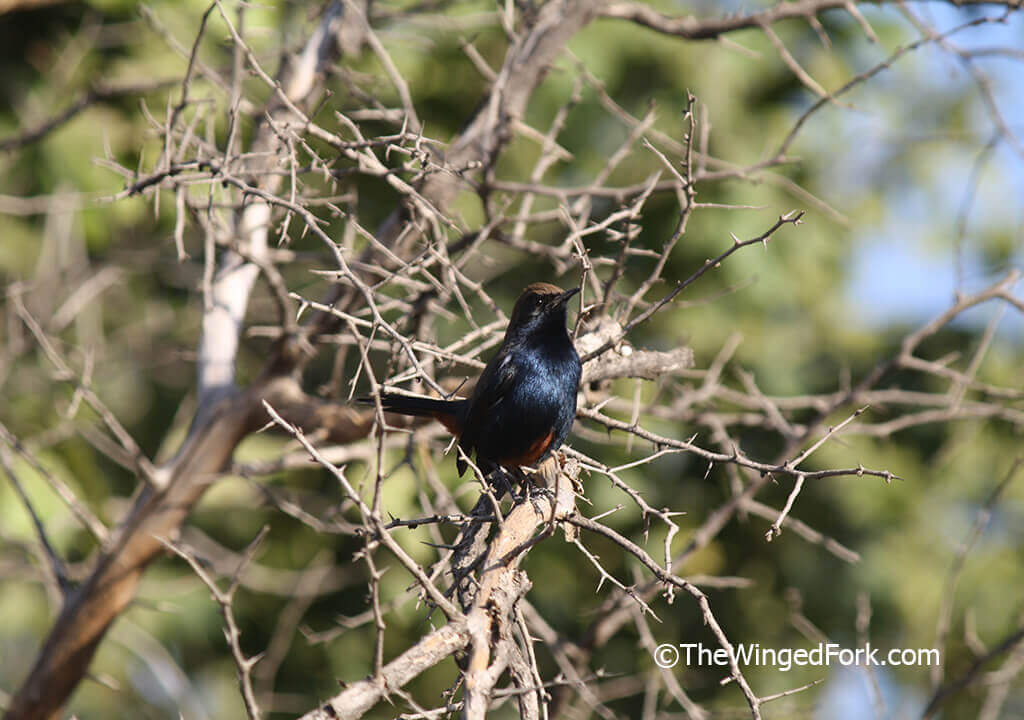
We also saw some leopard prints going in the direction opposite us. But our guide Rajesh said it would be difficult to spot them in this warm weather. We’d be luckier in the monsoon. We also learned that four legged animals always step with the hind legs in the same place they stepped with the forelegs.
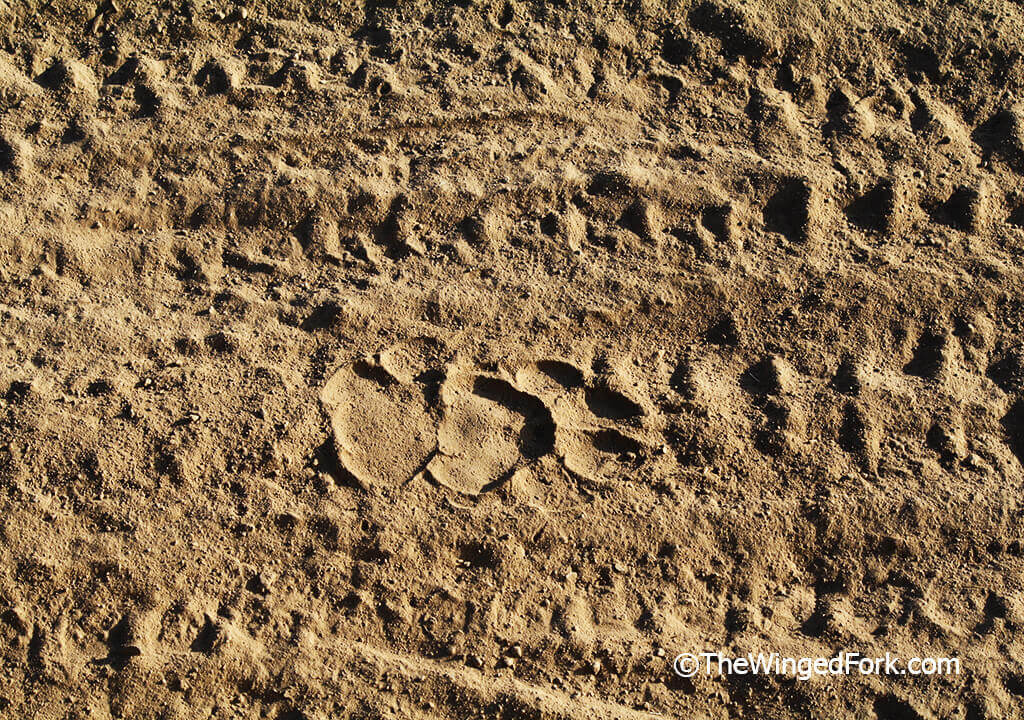
At the end of the safari, we headed back to our hotel happy and content that we’d seen Tigers but still hoping that Noor and her cub would have stayed a bit longer.
Afternoon Safari in Ranthambore National Park Zone 4
That same afternoon we headed back to Zone 4 for our second safari hoping to see more Tigers. This zone has a lot more tigers than zone 6, but we didn’t see any.
This time we opted for the Canter as we wanted to know the difference between the canter and Jeep. It was quite different. Overcrowded and Bumpy to be exact. (Point to note: always choose the gypsy).
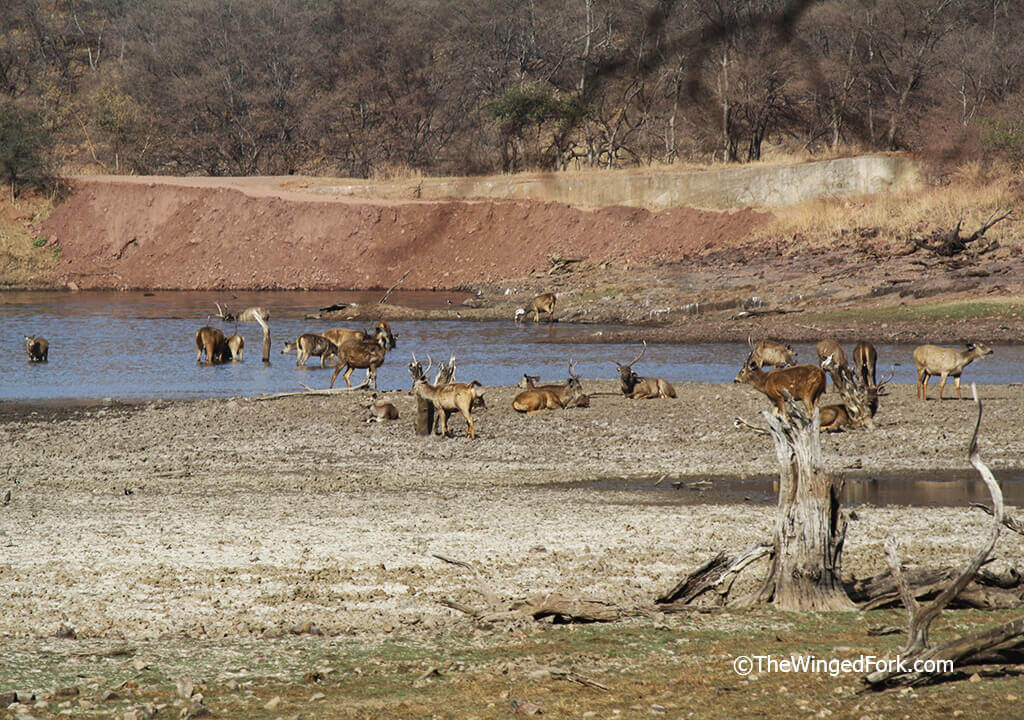
We did see a lot of the other wildlife that we saw in the morning – deer, peacocks, tree pies, Indian Robins and a few more.
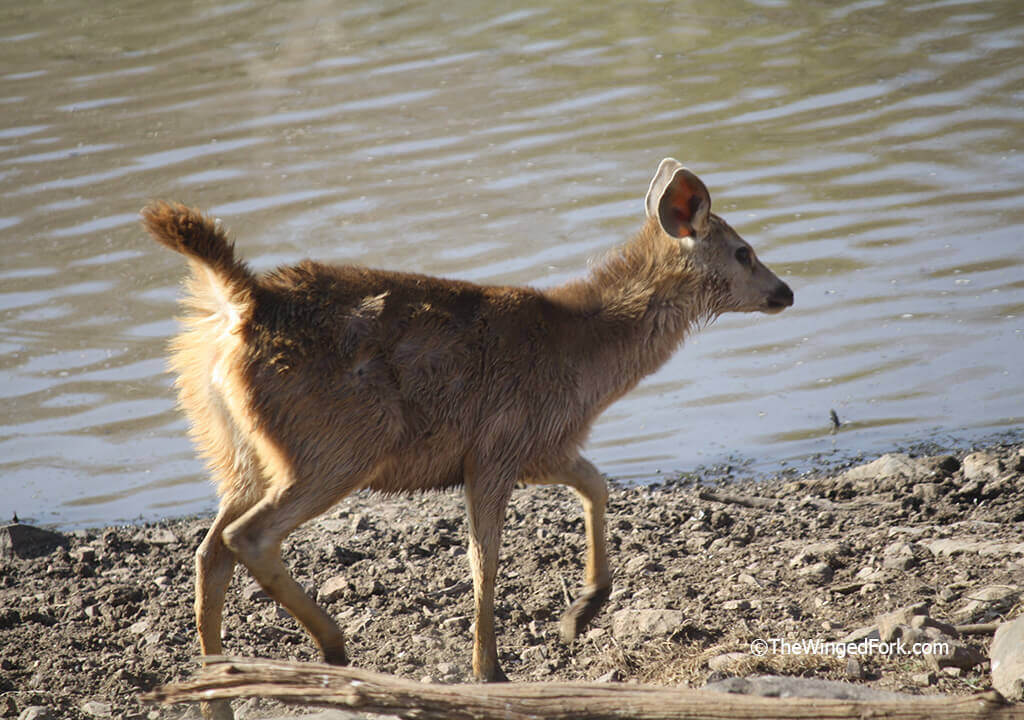
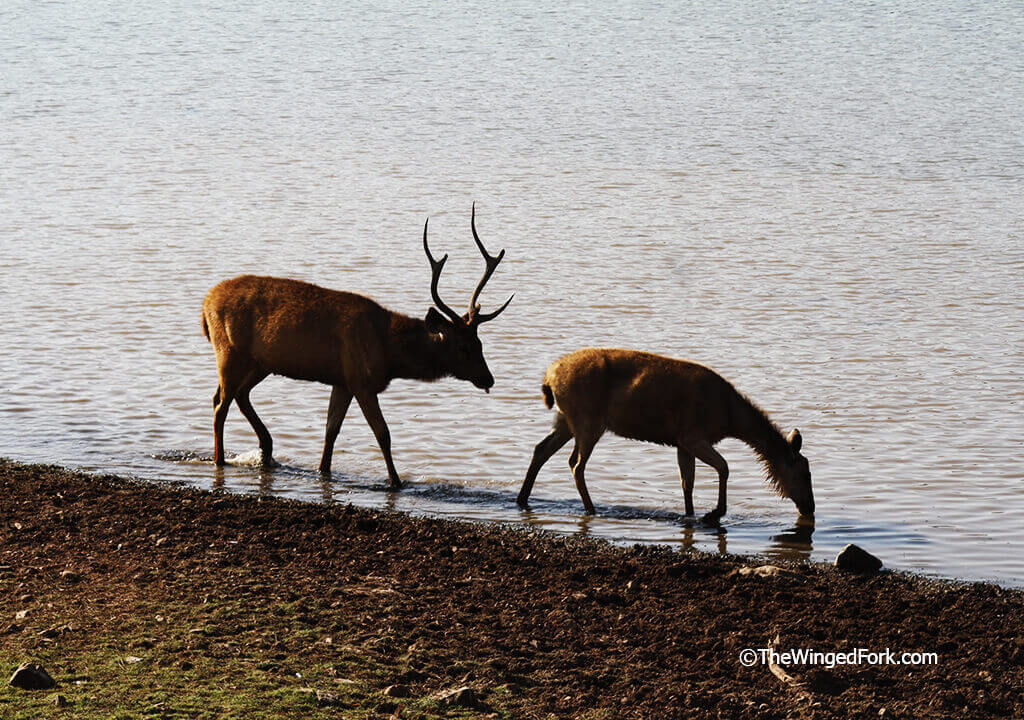
There were grey heron on the other side of the lake and storks on our side.
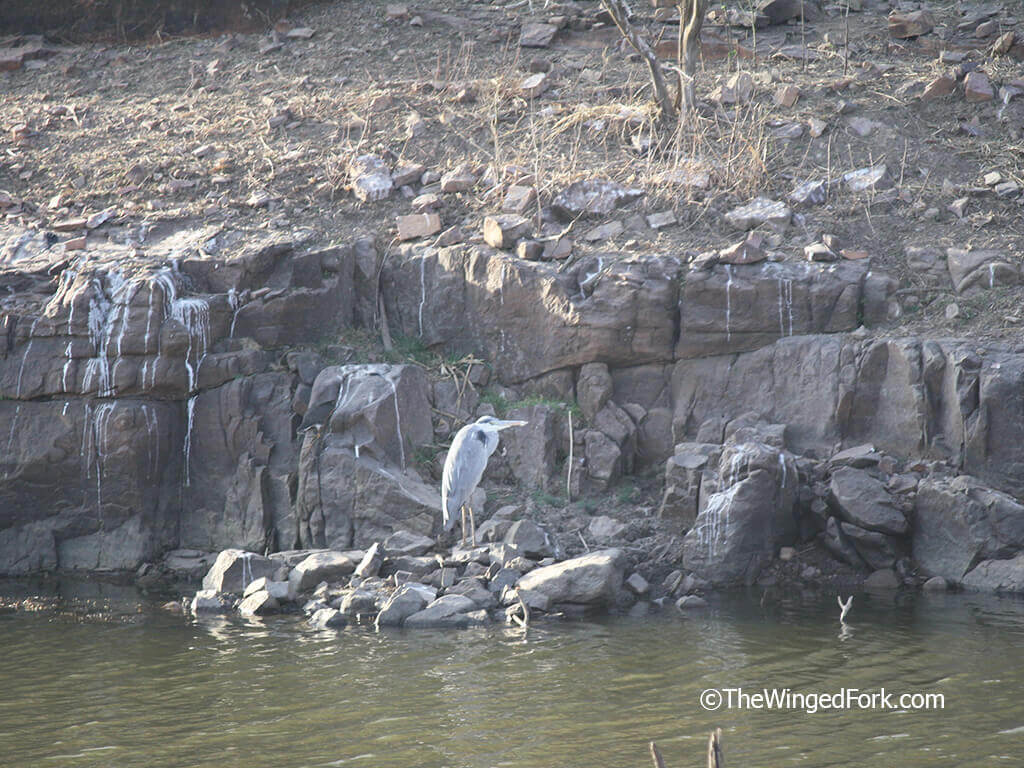
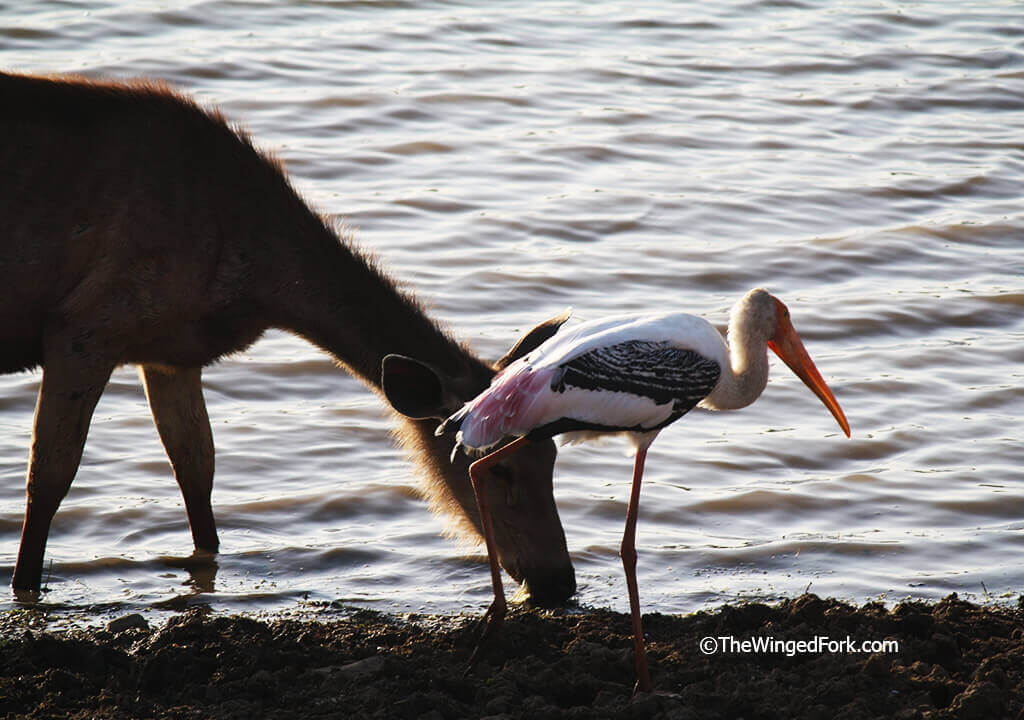
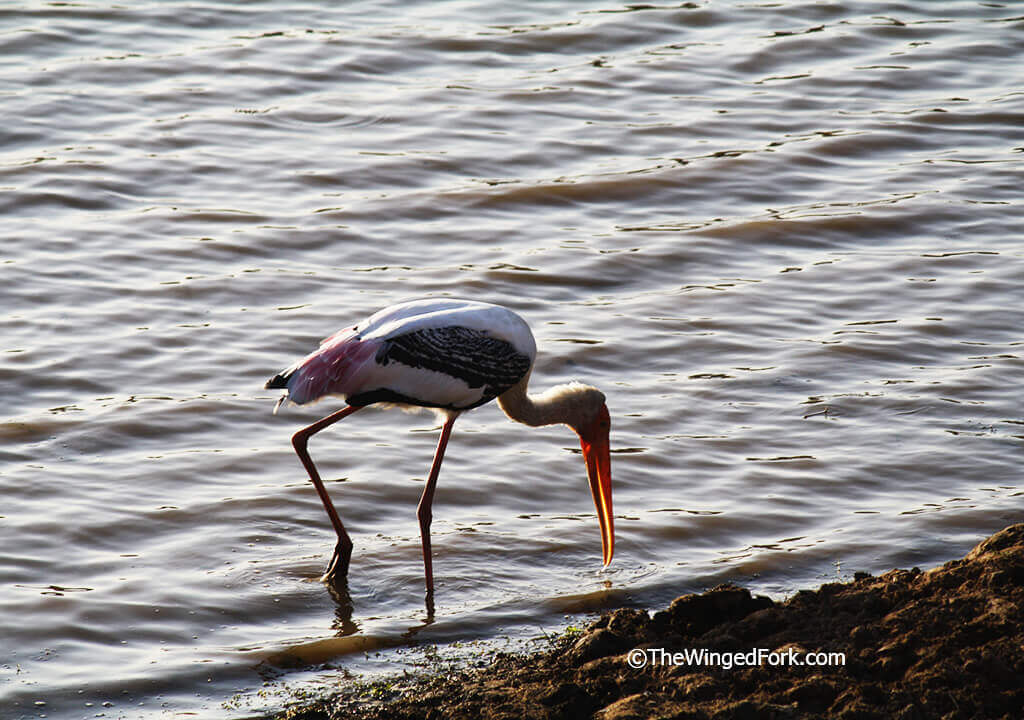
There were red wattled lapwigs too.
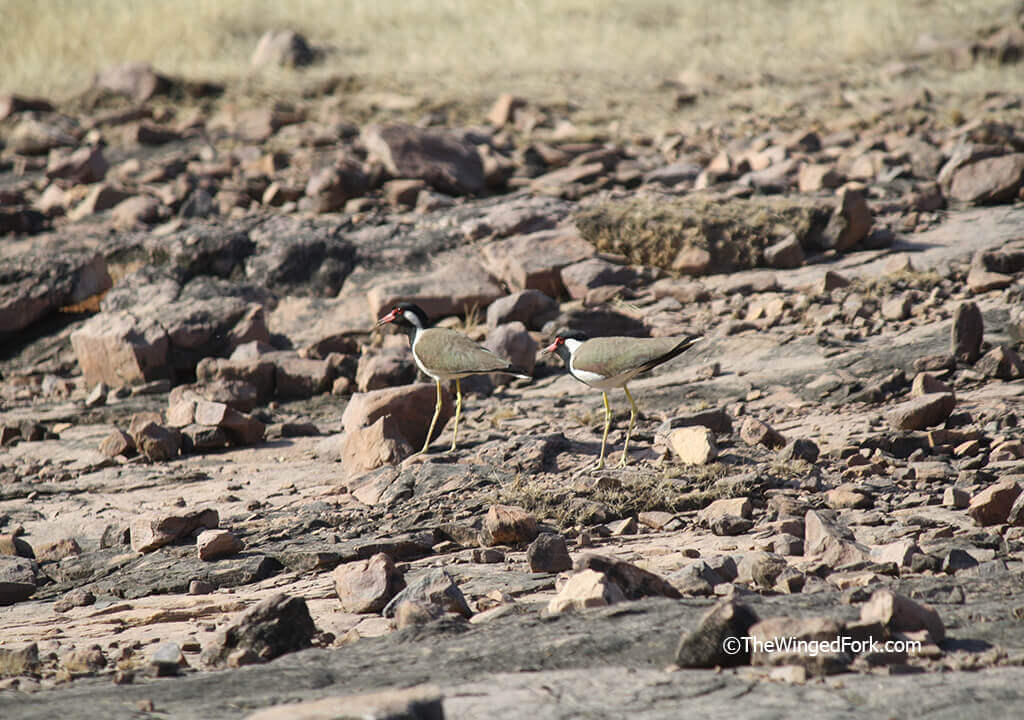
There are a darter and commorant in the middle of the lake. Spot the commorant if you can.

We moved a bit further up the lake to take better pics, but the sun gets in the way.
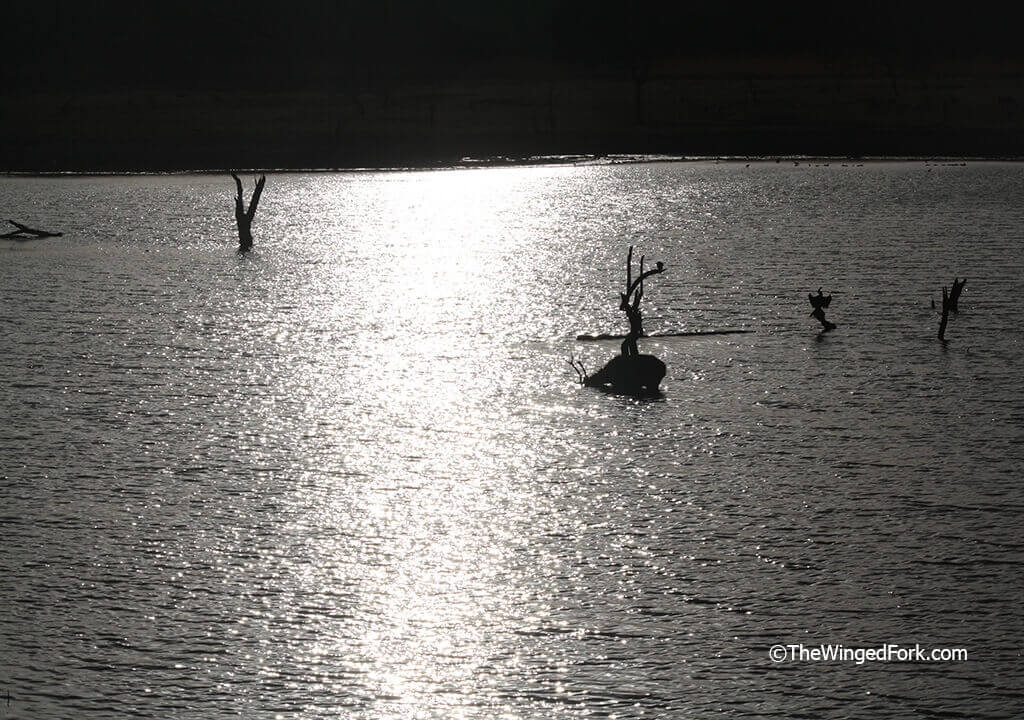
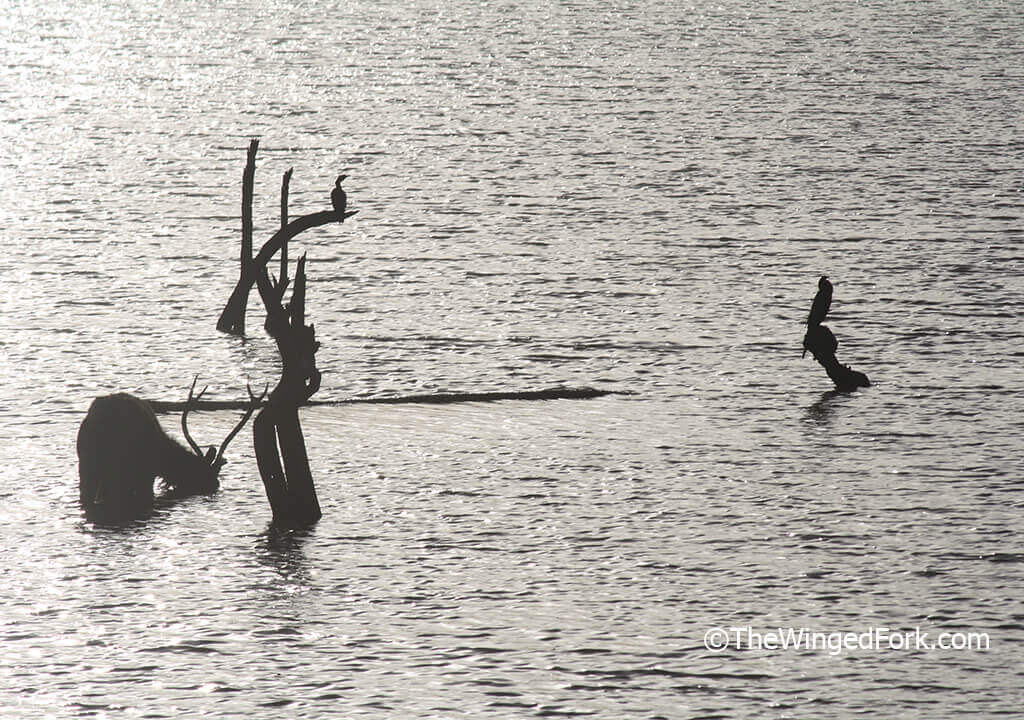
Sometime later one of the lazy crocodiles wakes up and moves closer to the deer. I wonder how that played out. We didn’t stick around to find out.
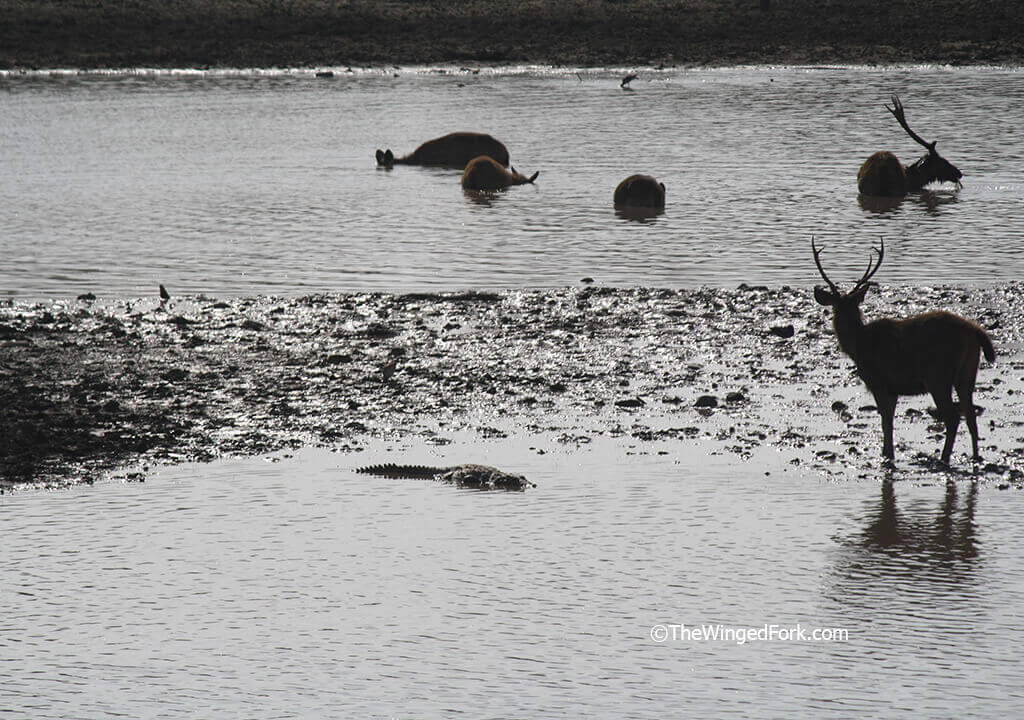
The sunset while leaving the park was good too.
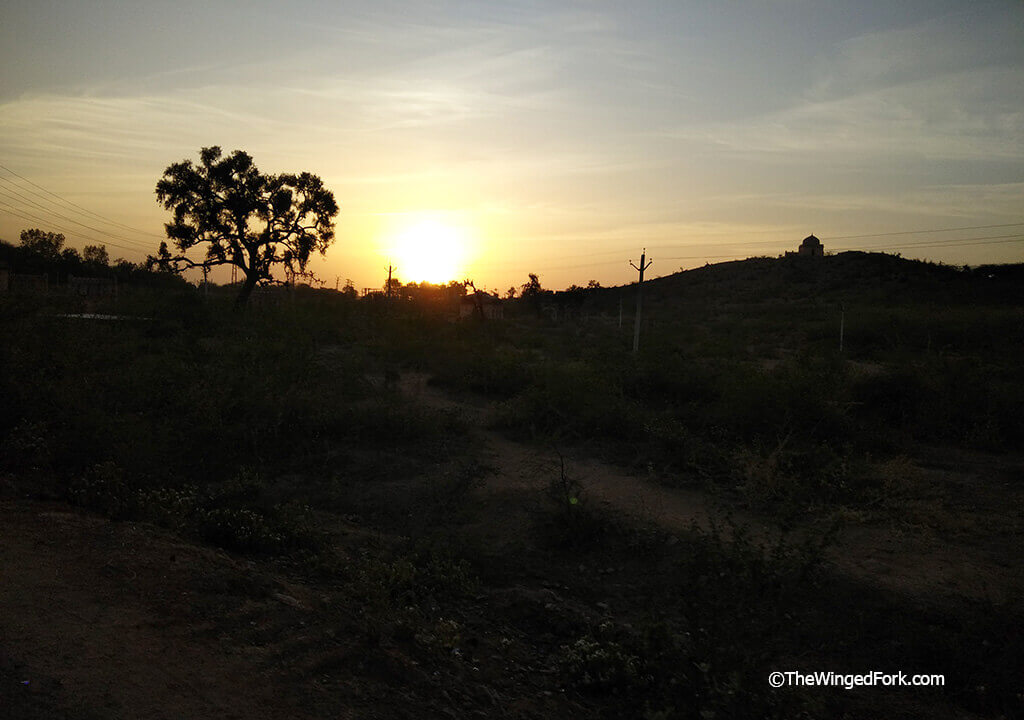
The day ended with us tired but well satisfied.
Other Posts About India You Might Like
- Unusual Places to visit in Goa, India
- Ranthambore National park safari
- Go offbeat in Goa
- Annapurna trek hiking
- Staying in an eco-friendly igloo in Manali, India
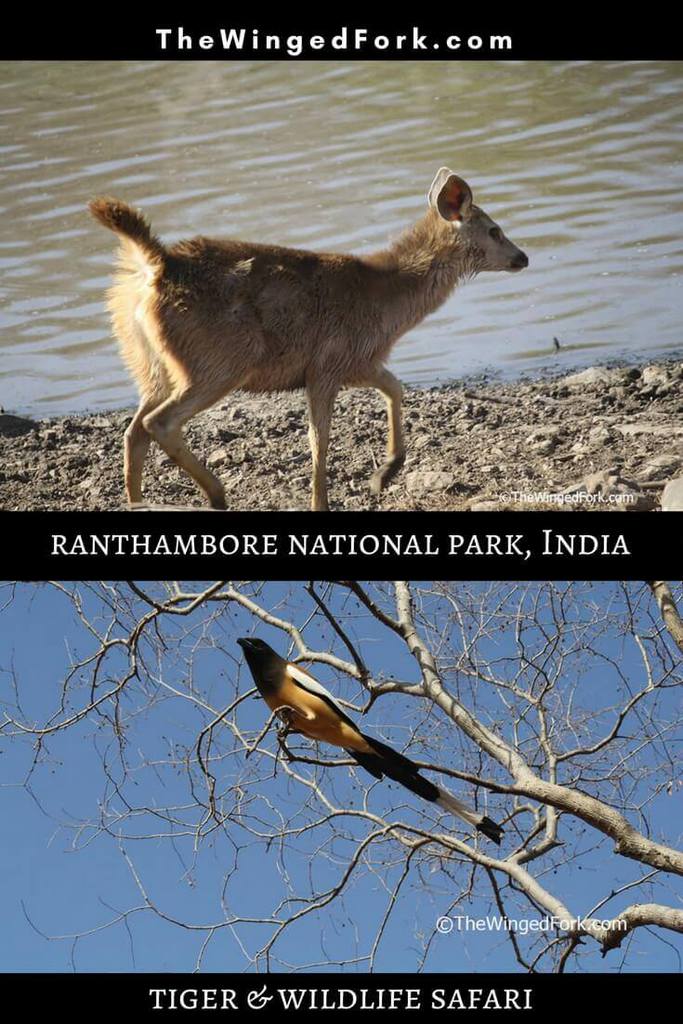
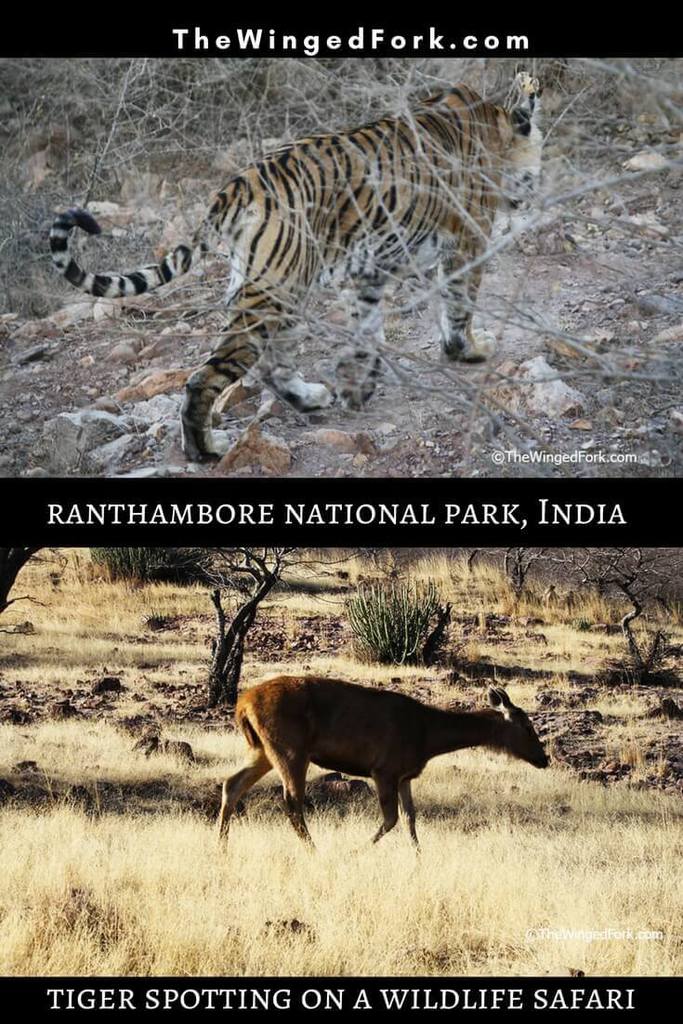
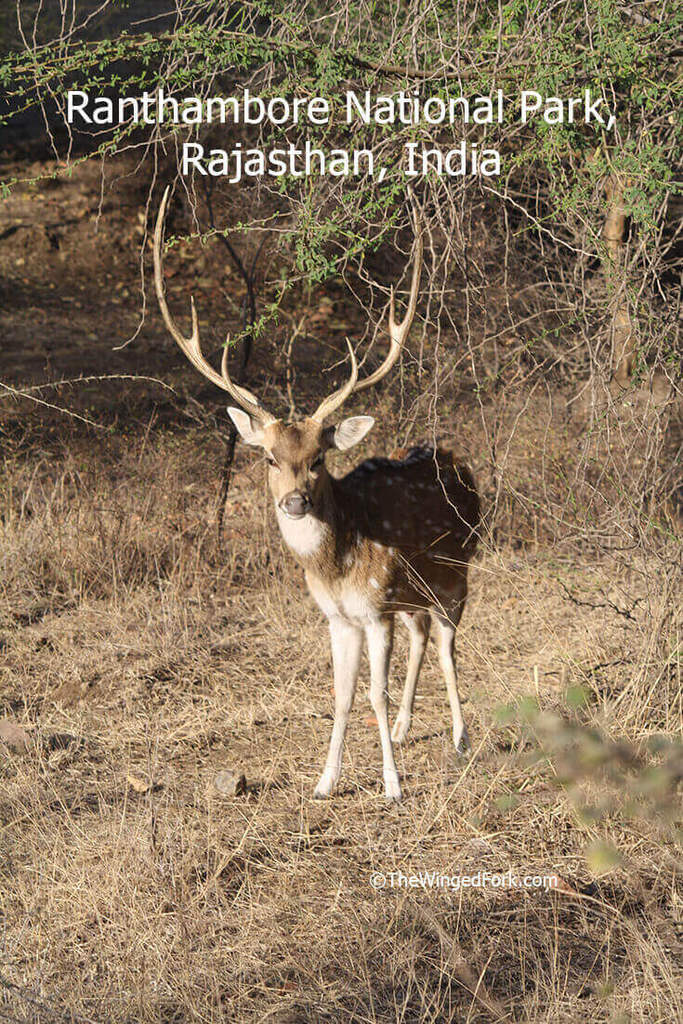
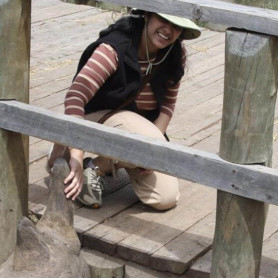
Sarah has worked in travel for 11 years and specializes in Africa. She caters to clients looking to travel to niche destinations across the globe, whether it’s climbing Mount Kilimanjaro, rafting on the Zambezi River, viewing seals and penguins in Antarctica or walking Safaris in Africa…..
She loves music, wine, food and travel. Her love for nature and wildlife makes her work even more enjoyable and satisfying. Armed with her camera, she likes to take photographs and write stories that inspire you to pack your bags and run off to a faraway destination.
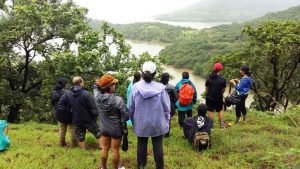
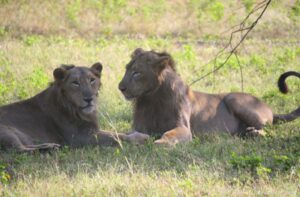
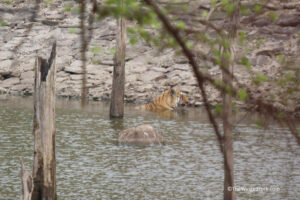
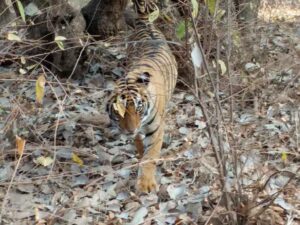


Amazing photos !!
What a fantastic trip, soooo much wildlife AND you got to see Tigers! We did a Tiger Safari in Nagarhole National Park in India which was amazing but didn’t spot any tigers! We did see a leopard though
🙂
Awesome that you saw a leopard! We hoped we would get to see one. But the guide said the
weather was too hot. They’re easier to spot in the monsoons. Methinks we should go back and visit!